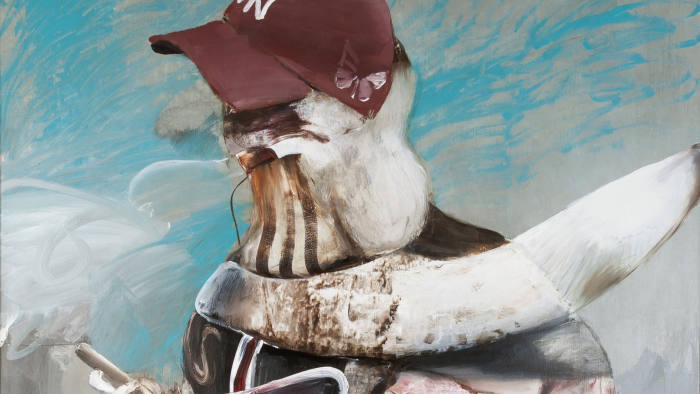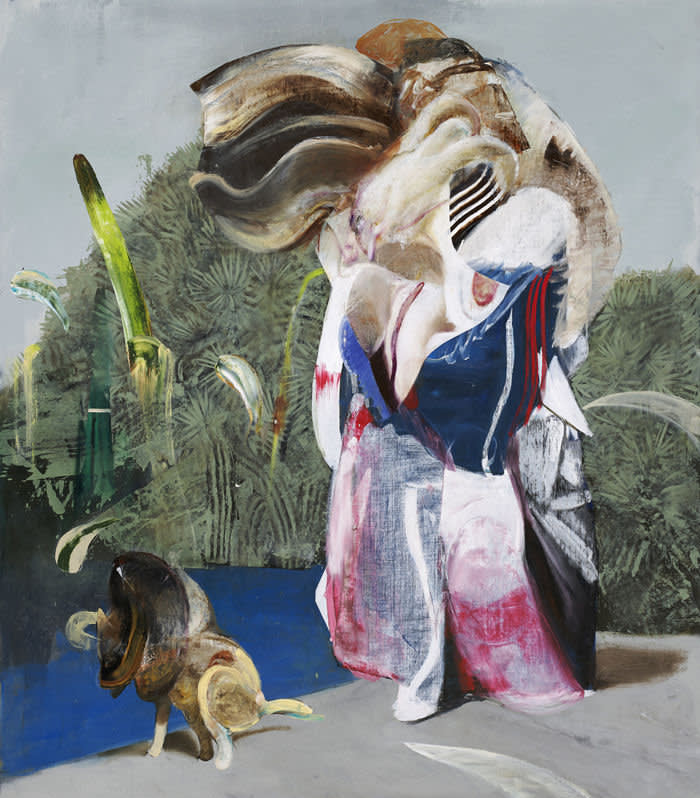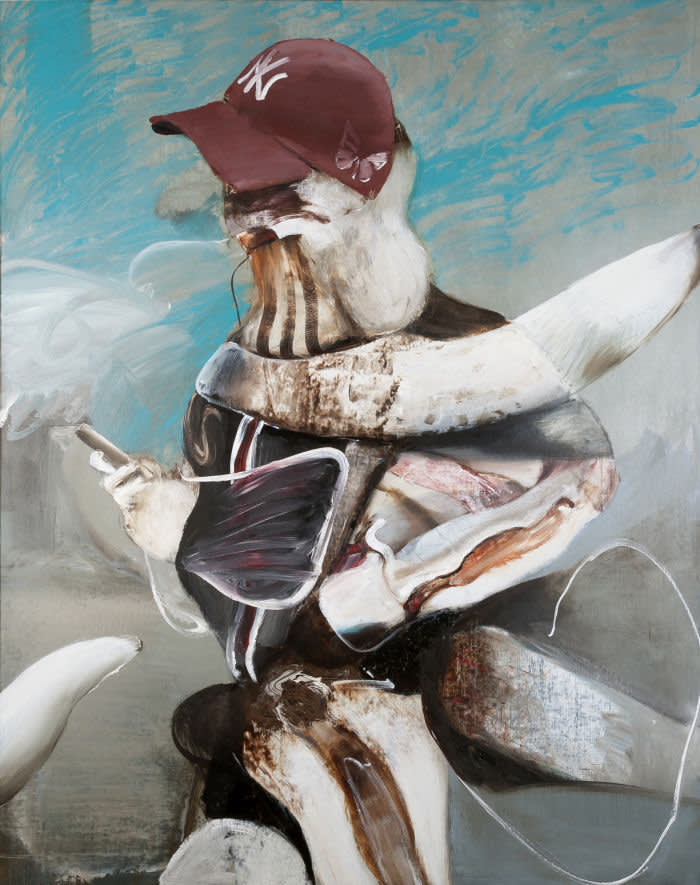
Adrian Ghenie at Venice's Palazzo Cini declares painting as a vital force

The world’s most exciting painter under the age of 50? No one approaches Adrian Ghenie. The Battle Between Carnival and Feast, his show at Palazzo Cini of large-scale new works depicting hybrid figures in watery settings, declares painting as a fount of enchantment and a vital force. These are paintings which express how things feel now, and shifts in history, through a strong, lush materiality, textures of present and past embedded within textures of pigment and canvas.
Entering, you confront “The Wall”: a corrugated metallic barrier rusted in too-hot sun above a pool of unclean water. Around it bird/human creatures, fragments of limbs and black beaks, swoop, plunge and cast reflections. Flickering surfaces, fluid, undulating or thick with paint dragged and manipulated in twists and scrapes of colour, enact a battle: rigid barricades, desperate beings about to sink or suffocate. The free forms, lively handling and chaotic narrative are exhilarating.
“The Wall” faces the glowing “Figure and Dog”, the pair by a pond in a tropical park sprouting phallic shoots and jets. The multicoloured faceless figure, head transformed into an unwieldy fan shape, crosses elaborately costumed geisha girl with ragged monster. The squatting dog, a few curling marks, has the blur yet resilient definition of Francis Bacon’s animals. In both paintings, Ghenie simultaneously creates and shatters illusions of deep space, oscillating between representation and artifice, constructing then dissolving images into abstract slathers.
Palazzo Cini stands next to the Guggenheim, and with this opening Ghenie superbly sustains the heritages of surrealism, existential drama and modes of liquefying figuration within that collection — Bacon’s “Chimpanzee”, works by Max Ernst and de Kooning especially — in confident, considered compositions informed by today’s incessant media flow and anxieties of disequilibrium and socio-environmental disaster.
Indeed, those excluded from life’s feast are Ghenie’s fantastical starring characters. “The Drowning” centres on a huge bloated body, a decomposing, reclining nude suffering a sea change in a lime-green streaked seabed with electric-bright fish, a rich strange Tempest-like stage set. In the largest painting, “The Raft”, a gigantic float of naked legs and feet progresses, in painterly veils, crisp ridges, soft washes, across the canvas, on the shore of bloodstained water. Orange-black billows suggest gathering storms — or a theatre curtain.
Half-delineated anatomies, anonymous bodies, drift, hang and lurk at the abyss, yet Ghenie’s staggering raft/procession also suggests human solidarity. Contemporary tragedies of the dispossessed are here, echoes of Gericault’s “Raft of the Medusa”, and also the promise of epic quests, odysseys, perhaps even the “hopeful monster” of evolutionary theory: mutant beings pointing to new lineages. (Ghenie’s 2015 Venice Biennale show, representing Romania, was called Darwin’s Room.) Who survives? Ghenie shrinks tropes of power: three small brutish heads, impasto amalgams of puffy features, jowly cheeks, topped with a flop of blond hair, are Donald Trump masks, untitled, celebrity distorted into nameless carnival grotesque, delivering grand guignol shudders. “My characters should somehow stink, should be felt, should possess something juicy, and they should finally be more than volumes,” Ghenie says.
He relishes how complex a proposition that is. “Today painting indulges in a weird mannerism,” he adds. “We find ourselves in an exaggeratedly distilled kind of situation . . . all this recycling and synthesis and combining of aesthetics.” Born in 1977, Ghenie belongs to the generation which “knows what life was like before the internet”; one aim of his screen-derived motifs is to “rematerialise the digital image”.
Another — spurred by childhood in Ceausescu’s Romania, which he downplays — is that he is “fascinated by what happened in the 20th century and how it continues to shape today . . . for me the 20th century was a century of humiliation and through my painting, I’m still trying to understand this”. He is a descendent, then, of Gerhard Richter and Luc Tuymans in historical gravitas, but in painterly flair, delight in the artifice of imagined worlds, and inventive building on modernist scaffolding, Ghenie shares territory with Peter Doig. It is an intoxicating combination, elegantly attuned here to the Venice milieu.

Adrian Ghenie's 'Figure with Dog' (2019) © Galerie Thaddaeus Ropac

Adrian Ghenie's 'Self-Portrait with iPhone' (2018) © Az Artgestion Collection, Bilbao Courtesy Tim Van Laere Gallery, Antwerp
